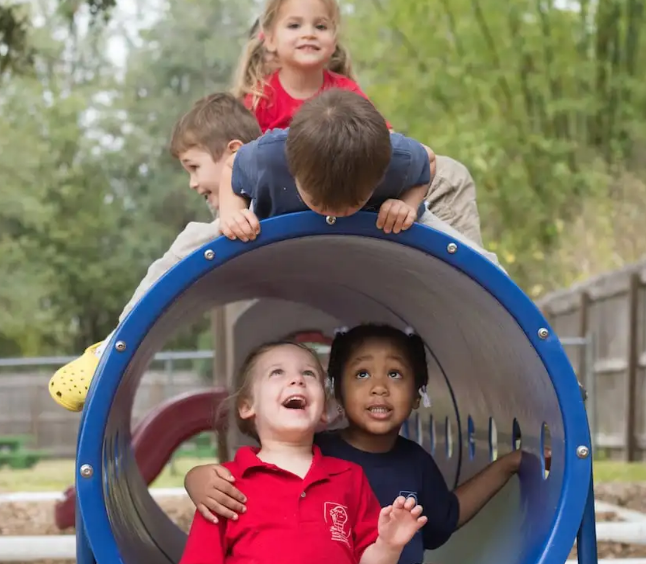
Montessori schools, associated for decades with private schools and well-to-do suburban dwellers, are becoming more accessible to lower-income children as more public schools expand education choice and create magnet programs using this model of student-directed learning.
Though state education choice scholarships have opened up seats at private Montessori schools in Florida and other states where lawmakers have passed similar programs, students in other states have had less access, and even in education choice states, public systems have started Montessori magnets to boost or maintain enrollments.
The latest school district to make a foray into Montessori education is the Hillsborough County School District in Tampa, Florida. With an enrollment of 218,943 students at 303 schools, it is the sixth-largest school district in the United States.
Officials there recently announced the opening of the district’s first Montessori magnet program at Essrig Elementary School, which boasts an enrollment of 549 students in pre-kindergarten through fifth grade. About 68% percent of Essrig’s students are eligible for free or reduced-price lunch, an indicator of socio-economic level.
Set to begin in August, the program will be open to 54 students ages 3 and 4 and those entering kindergarten. More grade levels are expected to be added. Eligibility will be based on a lottery.
“This is all about individualized development,” Superintendent Addison Davis said during a news conference. “There’s a lot of concentrated private institutions that offer Montessori, and we want to be an option for our parents as well, where they choose Hillsborough County Public Schools.”
According to the American Montessori Society’s website, a dozen private Montessori schools currently operate in Hillsborough County. Davis said the tuition can often be too expensive for some families and waiting lists at the schools are long.
The district’s program will be open to families throughout the county.
“Education has been revolutionized, and our industry has changed, and we’ve got to continue to change with the growing needs of our parents,” Davis said.
District leaders say the program will included mixed age groups and let students learn at their own pace.
“We might have a 5-year-old who is progressing at the same age level as a 7-year-old or a 3-year-old who is progressing beyond a 4-year-old or a 5-year-old,” said Kay Bays, chief of innovation at Hillsborough County Public Schools. “The point is to put them together so they can grow at their own pace and at their own speed.”
A national study showed surging interest in Montessori programs in at least the past 15 years. The National Center for Montessori in the Public Sector estimates that more than 300 new programs have opened since 2000, with a total of 635 that have been opened since 1975.
Much of the recent growth has been evenly split between charter and district magnet schools. (Florida is among the states with the highest numbers of public Montessori schools with 158, including 30 public programs, according to the report.) Like the school opening at Essrig Elementary, most operate as schools within larger schools. In South Carolina, 83% of all Montessori programs function within larger schools.
You can see a national census of Montessori programs here.
According to a 2019 article in Forbes, the expansion of school choice has expanded the number of Montessori programs to about 500 public school programs. That has helped improve access to lower-income families, but as demand rises, these families find themselves competing with middle-income families for seats.
The Montessori model was developed in 1906. Italian physician and educator Dr. Maria Montessori pioneered the child-centered approach, which is student-led and self-paced but guided, assessed, and enriched by caring and knowledgeable teachers, the leadership of classroom peers and an environment that encourages discovery.
Classrooms include students of different ages with students mentoring one another. Montessori experts say this freedom allows children to learn more deeply, make connections and develop creativity and critical thinking skills.
Montessori, who graduated from the medical school at the University of Rome, based her methods on scientific observations and started her first school to educate lower-income students. As the model took home and became more popular, wealthier families embraced it and sent their children to private schools that offered it.
To critics who express concerns it causes chaos, supporters say the opposite is true, and that the Socratic method that teachers use encourages student to expand their learning.
“Contrary to some who believe that Montessori classrooms are chaotic and nonstructured, where students can do whatever they want with no responsibility, nothing could be further from the truth,” wrote longtime Montessori principal Judy Dempsey in her 2016 book, “Turning Education Inside Out: Confessions of a Montessori Principal.”
“Students are expected to be responsible community members, finish the work that they choose, and return it to the shelf so that someone else can use it.”


